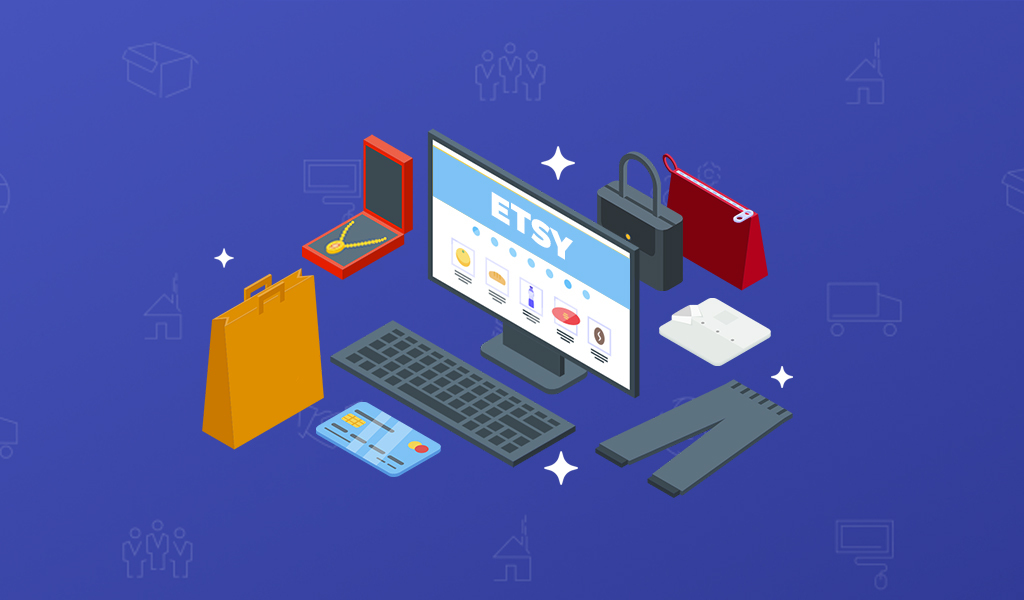News and Insights
E-commerce, Logistics, and Small Business Management
When It’s Time to Scale: How to Grow Your Etsy Fulfillment Without Losing Control

A sudden jump in Etsy orders can feel like winning the lottery—until you realize you still have to pack, label, and ship every single one by yourself. Growth is exciting, but without systems in place, it can also be overwhelming. What used to be fun starts to feel frantic. The charm of handmade gets buried under tape rolls and shipping deadlines.
That’s why the key to scaling isn’t speed—it’s structure.
Whether you’re still solo or bringing in help for the first time, building a lean, repeatable fulfillment system is what keeps your shop running smoothly as volume grows.
The First Sign: Fulfillment Is Taking Over Everything
Most Etsy sellers hit a point where fulfillment becomes the bottleneck:
- You’re spending more time printing labels than designing products
- Your weekends disappear into bubble mailers and packing slips
- You’re turning down orders—or dreading them—because there’s no room left to breathe
This is when scaling stops being a “someday” conversation and becomes a right now decision. But scaling doesn’t mean hiring a team overnight or moving into a warehouse. It just means being intentional about your systems, tools, and time.
Step 1: Batch Like a Pro
One of the simplest ways to boost your efficiency—without hiring anyone or investing in software—is to batch your tasks.
Instead of packing one order at a time from start to finish, try this:
- Print all packing slips and labels at once
- Pick all products at once
- Pack all orders in a row
- Label and organize them for drop-off
Batched workflows reduce switching costs. You move faster, make fewer mistakes, and feel less scattered.
Bonus tip: If you have best-sellers, consider pre-kitting packaging elements or partially prepping bundles in advance to speed up fulfillment later.
Step 2: Use Tools That Save Time
Once your order volume crosses a certain threshold, manual tracking becomes a liability. It’s easy to lose track of inventory, miss a restock window, or forget which order included a note or gift.
Tools like Craftybase, QuickBooks Commerce, or Shopventory can help you:
- Track inventory across SKUs
- Monitor COGS (cost of goods sold)
- Forecast reorder points
- Pull sales and tax reports
- Keep records tidy for tax time
You don’t have to automate everything overnight—but the more your backend is organized, the easier it becomes to delegate or outsource in the future.
Step 3: Hire with Purpose
If batching and software aren’t enough, it might be time to bring someone in. Start small. A few hours a week can make a huge difference if you’re thoughtful about what you delegate.
Good first tasks to outsource:
- Assembling packaging components
- Staging and packing orders
- Applying labels and organizing outbound shipments
- Restocking supplies or running post office errands
Write down your process as you go. Use checklists, labels, or diagrams. The more standardized your system, the easier it is to hand it off—with confidence.
Step 4: Explore 3PLs (Third-Party Logistics)
Eventually, some Etsy sellers choose to outsource fulfillment altogether—especially when order volume outpaces home space or personal capacity.
A 3PL (third-party logistics provider) can:
- Receive and store your inventory
- Pick, pack, and ship orders on your behalf
- Handle batch workflows, insert application, and returns
- Integrate with Etsy and other platforms
But it’s not for everyone. Many 3PLs aren’t set up to handle handmade, fragile, or highly personalized goods. And if your products require careful wrapping or branded inserts, you’ll need a fulfillment partner who understands the details.
If you’re curious about outsourcing, do your research and make sure the service you choose aligns with the care your customers expect.
What Scaling Shouldn’t Look Like
If you’re starting to feel like growth is making things worse—not better—watch for these red flags:
- Shipping chaos every holiday
- Constantly explaining delays to customers
- Burnout that makes you resent your shop
- Overflow inventory in every room of your home
Scaling isn’t about hustling harder—it’s about building smarter. Your time should shift toward high-leverage work: designing, marketing, and growing the brand.
That’s only possible if fulfillment is under control.
Final Thoughts: Fulfillment Is the Foundation
You can’t scale a brand on burnout.
As your Etsy shop grows, your fulfillment system needs to grow with it—quietly, reliably, and without making more work for you every step of the way.
Start by tightening your process. Batch. Organize. Document. Then decide what to delegate or automate. And when you’re ready, look for outside help that matches your values, your brand, and your pace.
You don’t have to go big to go pro. You just have to get intentional.
Overwhelmed with fulfillment issues? Let’s talk!

Recent Comments